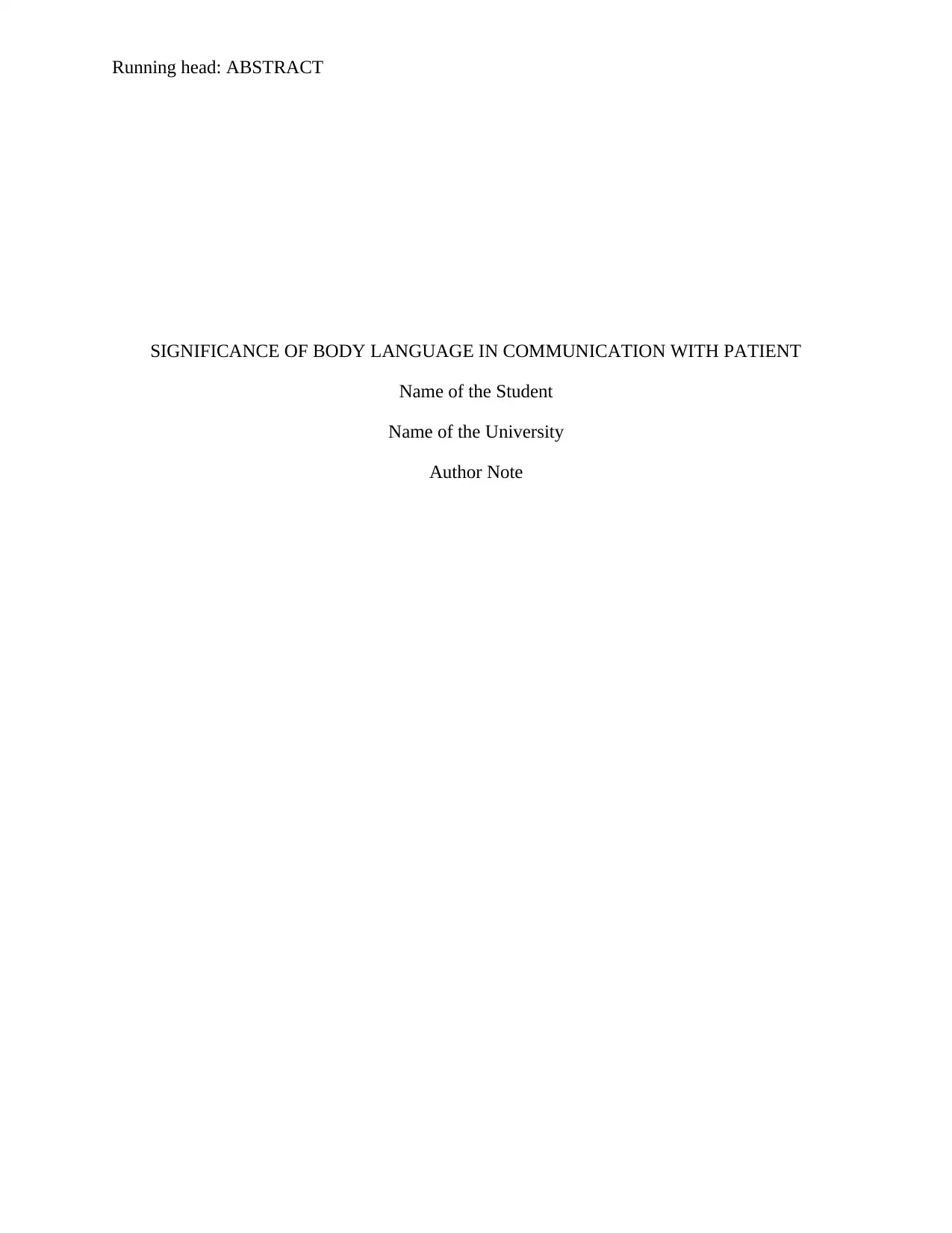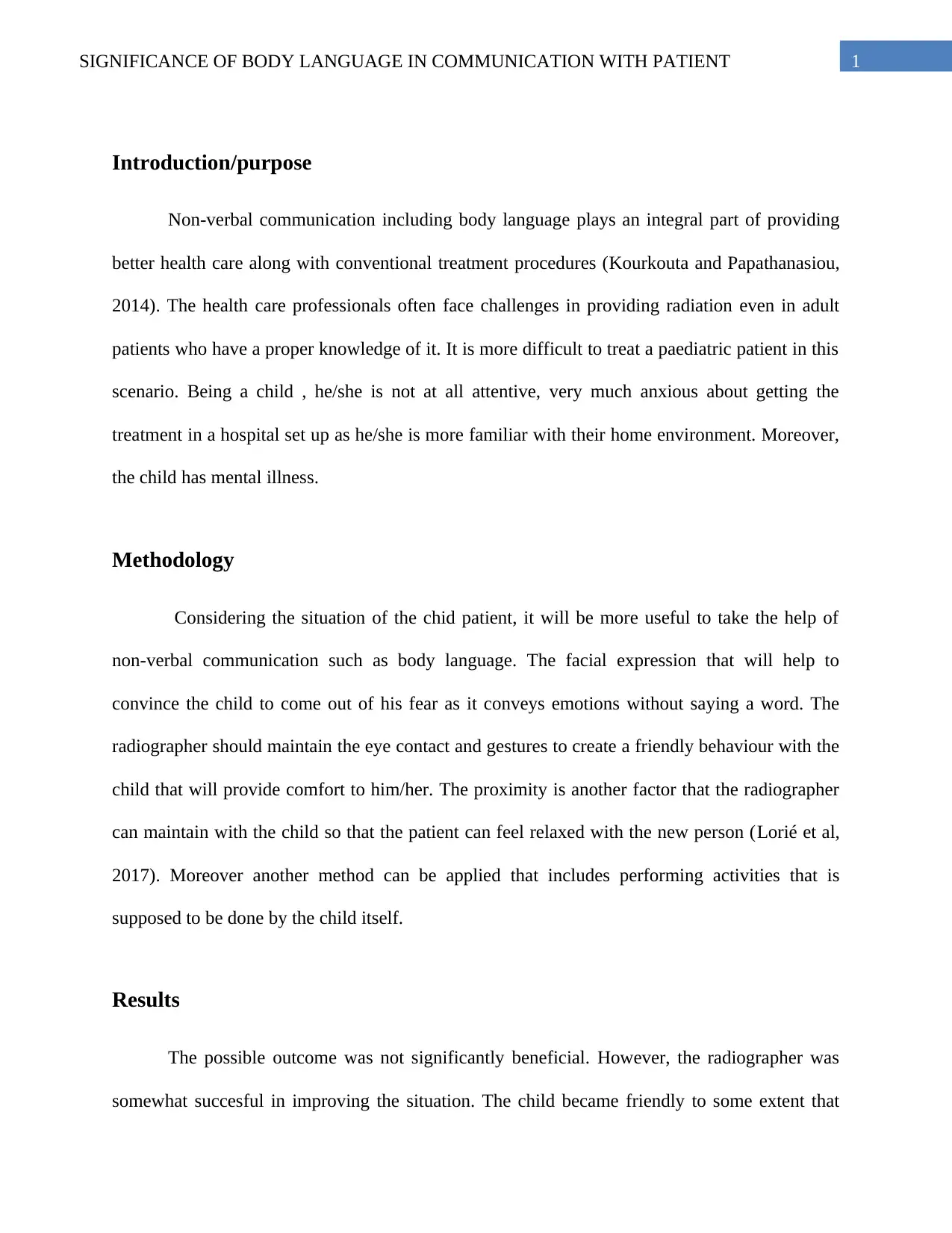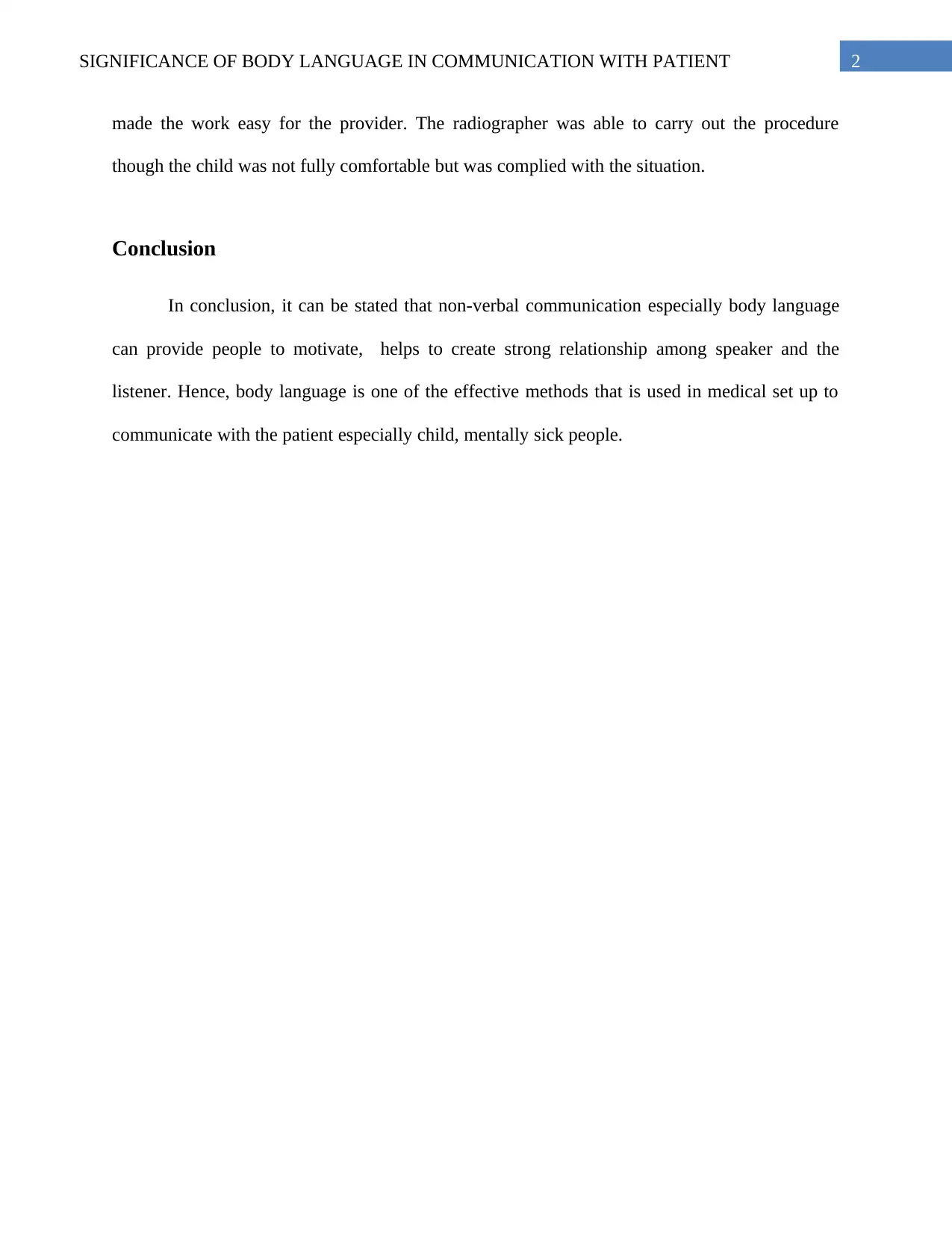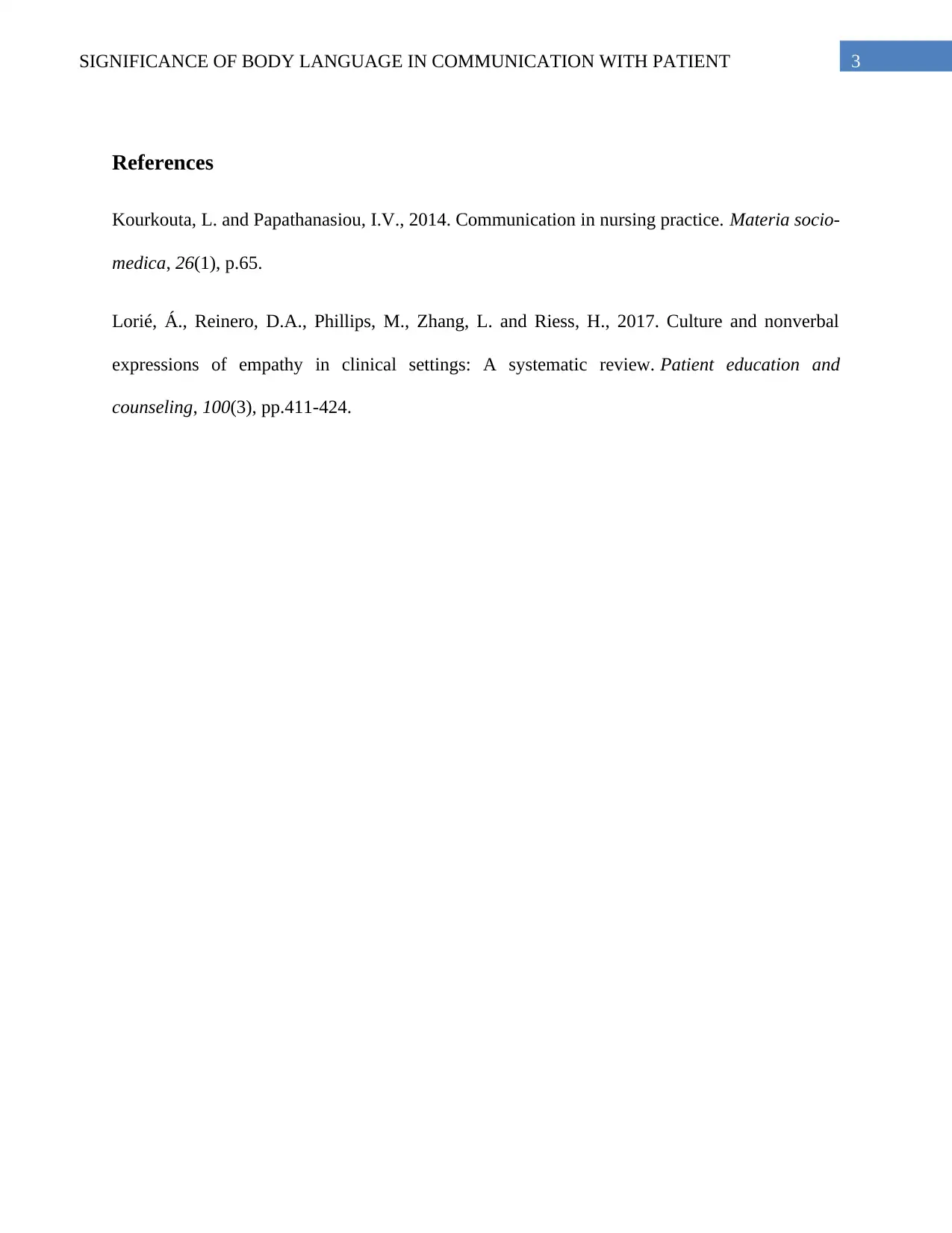The Significance of Body Language in Radiography Communication
VerifiedAdded on 2022/08/19
|4
|466
|16
Report
AI Summary
This report examines the significance of body language in the context of radiography, specifically focusing on communication with paediatric patients, particularly those with mental disorders. It emphasizes the importance of non-verbal cues, such as facial expressions, eye contact, and gestures, in establishing rapport and reducing patient anxiety. The methodology section highlights the use of these techniques to create a comfortable environment for the child, thereby potentially reducing the need for repeated imaging and minimizing radiation exposure. The results section indicates the potential benefits of these methods, such as improved patient cooperation and a more positive experience during the procedure. The conclusion stresses the importance of body language in healthcare settings, particularly for vulnerable patient groups, as a crucial tool for effective communication and improved patient outcomes. The report suggests that the use of body language can improve patient experience, reduce radiation dose and help in building a strong relationship between the patient and the radiographer.
1 out of 4











![[object Object]](/_next/static/media/star-bottom.7253800d.svg)